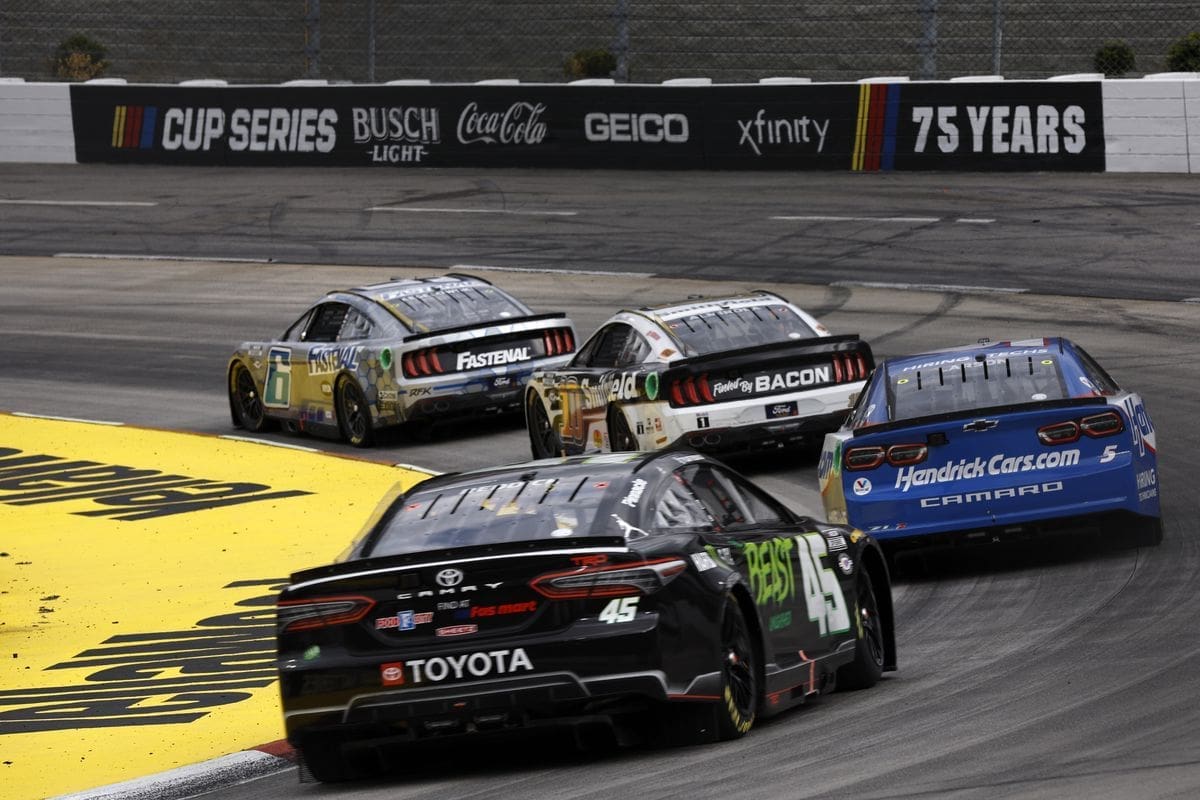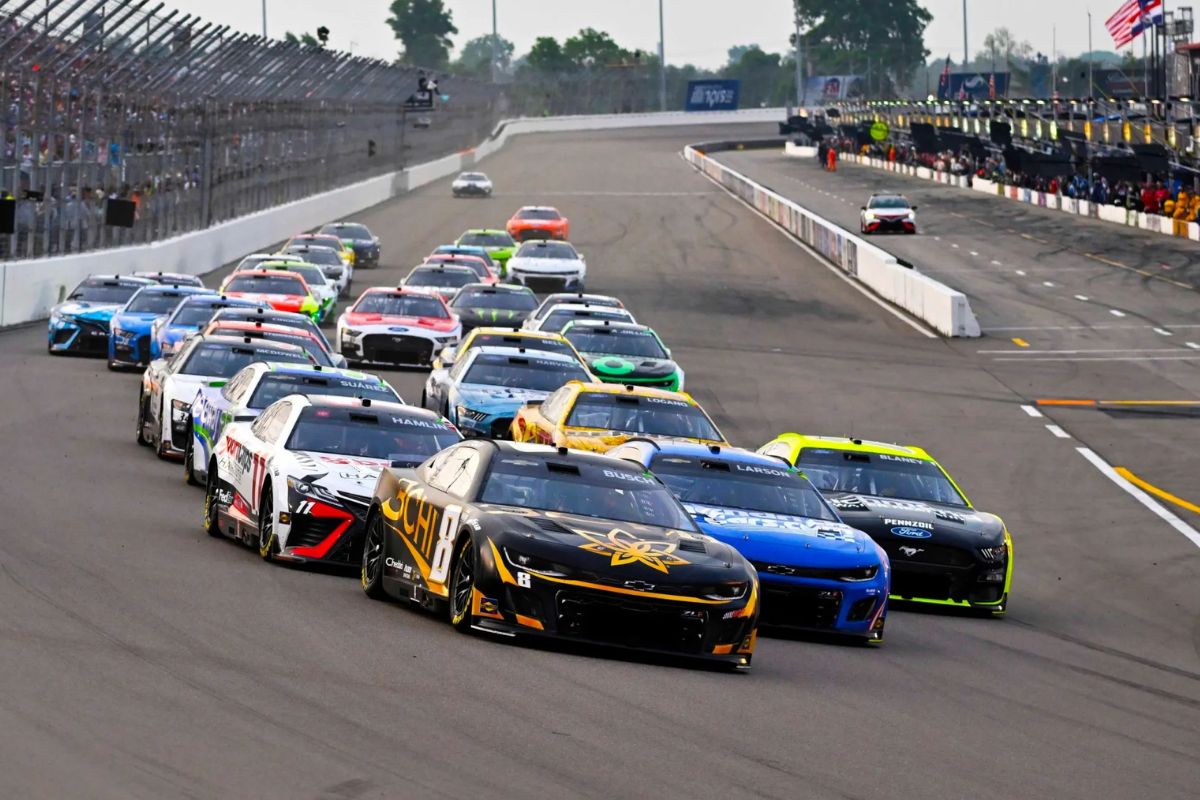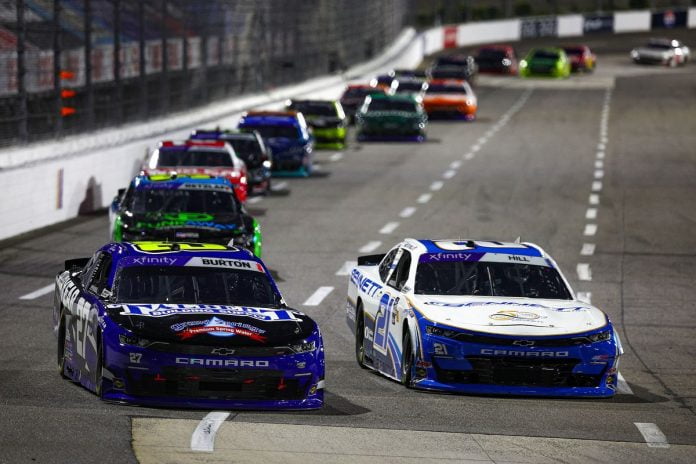Talladega’s Chaotic Crashes: At Talladega Superspeedway, the spectacle of high-speed motorsport is interwoven with the perilous reality of vehicular chaos. This track, notorious for its high-stakes crashes, serves as a crucible for testing the efficacy of NASCAR’s safety measures. The inherent design of Talladega promotes close-packed, high-velocity racing, notably increasing the risk of multi-car accidents. As NASCAR continues to evolve its safety protocols, each incident at Talladega provides crucial data, pushing the boundaries of current safety technology and challenging engineers to innovate. The question remains: how will NASCAR further adapt to augment driver safety in response to the unique demands of Talladega?
Key Takeaways
- Talladega Superspeedway’s high speeds and pack racing amplify the risk of high-impact crashes.
- Historic wrecks at Talladega have prompted significant NASCAR safety reviews and innovations.
- Implementation of safety features like SAFER barriers and advanced vehicle engineering aim to mitigate crash severity.
- NASCAR continuously refines safety protocols and gear, using real-world crash data to improve driver protection.
- The Next Gen car at Talladega features enhanced safety with a robust roll cage and energy-absorbing materials to reduce crash forces.
The Challenges of Talladega Superspeedway
Talladega Superspeedway, renowned for its blistering speeds, presents unique challenges due to its pack racing dynamics and high-banked turns that test both the skill and nerve of NASCAR drivers. Pack racing, a hallmark of Talladega, forces competitors to maneuver their vehicles mere inches apart at speeds often exceeding 200 miles per hour. This proximity reduces aerodynamic drag but increases the risk of multi-car accidents due to the reduced reaction times and minimal margins for error.
The 2.66-mile tri-oval track features turns banked at up to 33 degrees, among the steepest in NASCAR, which allows for the maintenance of high speeds through corners. However, this architectural feature also demands exceptional precision from drivers and puts intense physical strain on them as they combat increased gravitational forces. The continuous high-speed cornering exacerbates tire wear and mechanical stress, pushing the vehicles’ endurance to its limits.
Moreover, the strategy in pack racing at Talladega is complex and fraught with peril. Drivers must constantly make split-second decisions about when to push forward or hold back, all while maintaining an acute awareness of their surroundings. The draft, or slipstream, created by leading cars can be both a tactical advantage and a potential hazard. Misjudging the draft can lead to ‘bump drafting’ gone wrong, where a car taps another just slightly incorrectly, possibly triggering catastrophic wrecks.
Navigating Talladega Superspeedway, accordingly, is not merely about speed but also about mastering the delicate art of aerodynamic efficiency, spatial judgment, and psychological endurance, making it one of the most challenging circuits in the NASCAR series.

Historic Wrecks at Talladega
Despite its allure as a pinnacle of motorsport excitement, Talladega Superspeedway has been the scene of numerous catastrophic accidents that have marked its history in the world of NASCAR racing. The track’s design and its propensity for high-speed racing converge to create a unique risk profile that has led to some of the most unforgettable and tragic moments in motorsport history.
Analyzing these historic wrecks provides insight into the evolution of both the sport and its safety protocols. Often, these incidents served as harsh lessons that spurred changes in car design, track safety features, and race regulations. Each major accident at Talladega has not only impacted the drivers and teams involved but also raced through the collective psyche of the motorsport community, often reshaping the standards of what is considered safe in high-speed racing.
Here is a detailed breakdown of landmark incidents at Talladega:
| Year | Incident | Impact on NASCAR |
|---|---|---|
| 1973 | Massive pile-up involving 21 cars | Triggered initial safety reviews |
| 1987 | Bobby Allison’s crash, which sent his car airborne into the catch fence | Led to the implementation of restrictor plates |
| 1996 | Sterling Marlin and Mark Martin’s cars flipped multiple times | Highlighted the need for improved roof flaps |
| 2009 | Carl Edwards’s car flew into the fence, injuring spectators | Accelerated advancements in spectator safety measures |
This table encapsulates not just the raw power and danger inherent in NASCAR racing at Talladega, but also the ongoing commitment to advancing safety standards that protect both participants and fans alike. Each wreck, while devastating, has contributed to the collective understanding and continuous improvement of safety in motorsport.
Notable Wrecks and NASCAR’s Safety Measures
How have notable wrecks at Talladega Superspeedway influenced the development and implementation of NASCAR’s safety measures?
The historical narrative of Talladega’s chaotic incidents has propelled advancements in motorsport safety protocols. Given the track’s unique design, characterized by minimal escape routes, the propensity for high-speed accidents has been noticeably high. This has necessitated a rigorous examination of crash dynamics and the subsequent fortification of safety measures.
Notably, the wrecks involving renowned drivers like Rusty Wallace have underscored the urgent need for robust safety solutions. These incidents have catalyzed NASCAR to innovate and implement advanced protective technologies. The development of energy-absorbing barriers, better known as SAFER barriers, was directly influenced by the high-impact crashes witnessed on this super speedway. These barriers significantly reduce the force of impact when a car collides with the walls, thereby offering greater protection to the drivers.
Moreover, the frequent multicar pileups at Talladega, resulting from the close-quarter high-speed racing, have led to the introduction of more rigorous crash-testing standards for race cars. The chassis constructions have been redesigned to enhance structural integrity and survivability in crashes. NASCAR has also revised its vehicle specifications to include more resilient safety cells and enhanced fire suppression systems, addressing the fire risks associated with high-speed impacts.
Through these measured responses to the notorious wrecks at Talladega, NASCAR has not only improved safety standards but also provided a framework that balances the thrill of high-speed racing with paramount safety considerations. The continuous refinement of these safety measures ensures that the sport evolves in response to every incident, thereby safeguarding the welfare of its drivers and setting a benchmark in motorsports safety.

NASCAR’s Commitment to Driver Safety
In response to the alarming crashes at Talladega Superspeedway, NASCAR has intensified its commitment to driver safety through the implementation of thorough and cutting-edge safety measures. This proactive approach underscores a pivotal shift in NASCAR’s operational ethos, prioritizing the well-being of drivers, pit crews, and spectators alike. The frequency and severity of incidents at high-speed tracks such as Talladega have propelled NASCAR into a continuous reassessment and improvement of safety protocols, ensuring that each is dynamic enough to adapt to evolving challenges in motorsports.
This commitment is not merely reactionary but part of a broader, strategic vision aimed at fostering a safer racing environment. By adopting a holistic view of safety, NASCAR integrates research, technology, and feedback from different stakeholders within the racing community to formulate and refine safety initiatives. The organization’s dedication is evident in its willingness to engage with advanced engineering solutions and in its collaboration with automotive safety experts to push the boundaries of what is technically feasible in protecting its drivers.
Moreover, NASCAR’s focus extends beyond the immediate aftermath of high-profile crashes. It involves a sustained, rigorous pursuit of safety improvements, characterized by regular audits of safety practices and ongoing adjustments based on the latest international safety standards. This approach ensures that NASCAR remains at the forefront of motorsport safety innovations, setting a benchmark for other racing leagues globally.
Through these efforts, NASCAR not only addresses the direct risks associated with high-speed racing but also plays a vital role in the broader discourse on safety in sports, reinforcing its position as a leader in the field.
Safety Measures Implemented by NASCAR
To strengthen driver safety, NASCAR has implemented a series of rigorous measures, including advanced vehicle engineering and stricter safety protocols. These interventions reflect a proactive approach to mitigate risks associated with high-speed racing in a highly competitive environment.
Central to NASCAR’s safety strategy is the evolution of the car’s structural integrity. The development of the Next Gen car is pivotal, incorporating features such as a robust roll cage and energy-absorbing materials strategically positioned to protect the driver during impacts. Moreover, the chassis has been redesigned to improve energy dispersion, effectively reducing the force transferred to the driver in a crash.
In addition to these engineering advancements, NASCAR has revised its safety protocols. Enhanced on-track regulations aim to minimize high-risk maneuvers that frequently lead to severe accidents. Also, NASCAR’s commitment extends to rigorous post-crash analysis and continuous feedback loops with teams and drivers to refine safety measures based on real-world incidents.
Furthermore, NASCAR has intensified its focus on driver gear. Helmets, HANS devices (Head and Neck Support), and fire-resistant suits are mandatory, with specifications regularly updated to capitalize on technological advancements in materials science. These gear enhancements are critical, especially given the high-velocity crashes characteristic of Talladega’s racing dynamics.

News in Brief: Talladega’s Chaotic Crashes Testing NASCAR’s Limits
To sum up, the high-intensity environment of Talladega Superspeedway serves as a critical testing ground for NASCAR’s safety protocols.
The track’s history of severe crashes has catalyzed significant advancements in automotive safety technologies and regulatory measures.
NASCAR’s proactive stance on driver safety, incorporating both technological innovations and regulatory frameworks, exemplifies a commitment to evolving and enhancing safety standards in response to the unique demands posed by high-speed motorsport environments.
Our Reader’s Queries
Q: What is the max capacity of Talladega?
A: Talladega boasts a total peak capacity of approximately 175,000 spectators, with the main grandstand accommodating around 80,000 individuals.
Q: What is the average number of cautions at Talladega?
A: The average number of caution-causing accidents and spins in a Talladega race stands at 3.5. Notably, 10.9% of races featured a solitary caution-causing incident, while 20.3% witnessed three such occurrences out of 64 races analyzed.
Q: What is Talladega known for?
A: In a seemingly ordinary expanse, once earmarked for soybean cultivation and flanked by deserted airport runways, engineers and crews orchestrated the birth of Talladega Superspeedway—a colossus revered as the largest, fastest, and most fiercely competitive superspeedway on the planet.
Also Read: Austin Hill’s Talladega Curse Strikes: Late Race Contact Spoils Ag-Pro 300


